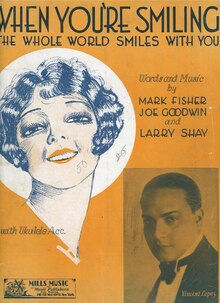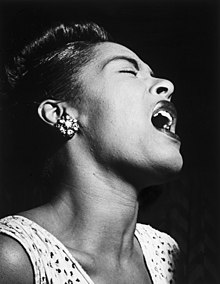| "When You're Smiling" | |
|---|---|
 Sheet music, 1928 | |
| Song | |
| Published | 1928 by Mills Music |
| Songwriter(s) | Larry Shay, Mark Fisher, Joe Goodwin |
"When You're Smiling" is a popular song written by Larry Shay, Mark Fisher and Joe Goodwin. First published in 1928, popular recordings were made by Seger Ellis (1928), Louis Armstrong (1929), and Ted Wallace & His Campus Boys (1930). [1]
Contents
The lyrics and music of the song entered the public domain in the United States in 2024. [2]
It is the unofficial anthem of Leicester City Football Club, adopted by fans in the 1980s. As of 2022, the recording by Jersey Budd is played before the start of each home match. [3]
